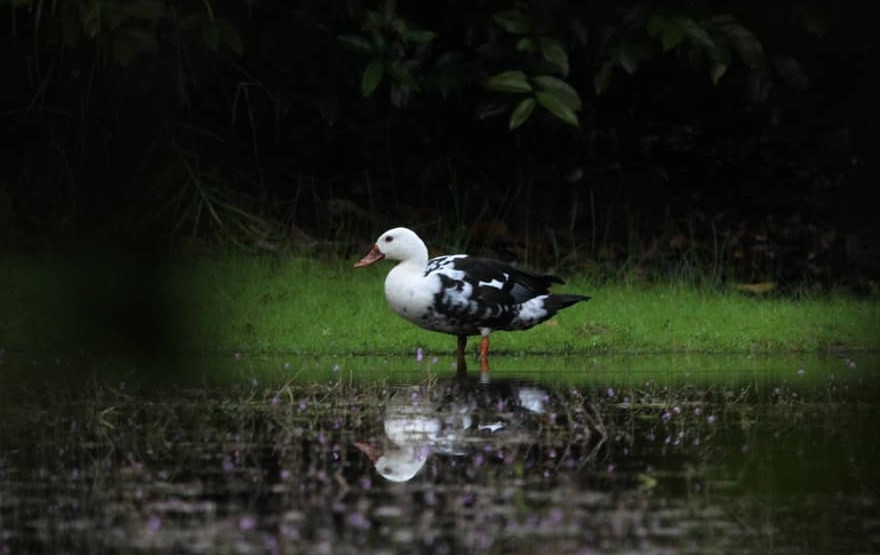Nur Janti
The Jakarta Post/Jakarta
Habitat loss from land conversion and illegal hunting has pushed the white-winged duck (Asarcornis scutulata), locally known as mentok rimba, into “critically endangered” status due to a rapid decline in the bird’s estimated population, according to this year’s Status Burung di Indonesia (Status of birds in Indonesia) report by a local NGO.
The white-winged duck is native to Cambodia, India, Indonesia, Myanmar and Thailand, inhabiting evergreen wetlands and swamp forests where it roosts and nests.
It has a black body and a white head, and its English name is derived from the distinctive patches on its wings. One of the largest duck species, the white-winged duck measures between 66 and 81 centimeters from head to tail and has a wingspan of 116-153 cm. Adult males weigh between 2.94 and 3.9 kilograms, while adult females weigh 1.95-3.05 kg.
Following an assessment in July 2024, the International Union for Conservation of Nature (IUCN) reclassified Asarcornis scutulata from endangered to critically endangered, citing a “precipitous decline” and severe fragmentation in population.
BirdLife International, the official source of ornithological information for the IUCN, estimates that only 30 to 60 mature white-winged ducks remain across Sumatra. This places it among the 30 bird species classified as critically endangered in this year’s IUCN Red List.
